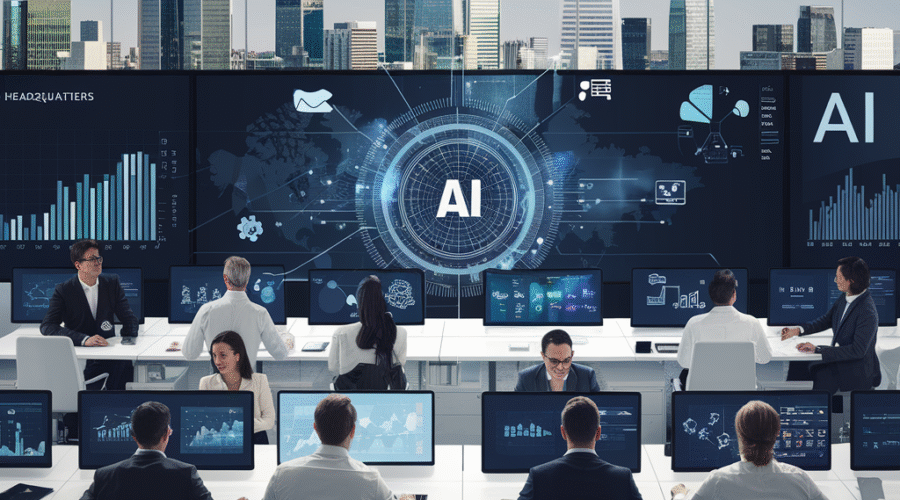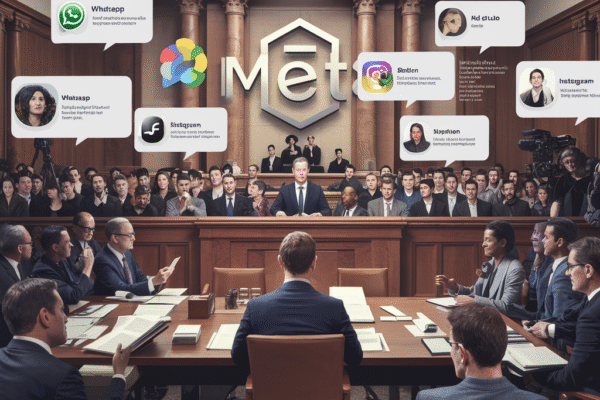As merger and acquisition activity reaches fever pitch in 2025, a seismic technological shift is rewriting the rules of corporate dealmaking. New research reveals 84% of M&A professionals plan to implement generative artificial intelligence (GenAI) tools within their workflows by 2027 – a fourfold increase from current adoption rates[15][16]. This transformation comes as global M&A volume surpasses $4.2 trillion year-to-date, with AI-enabled firms capturing 37% more deal value than analog competitors according to Bain & Company analysis[1][4].
The Acceleration Imperative: Why AI Adoption Became Non-Negotiable
The M&A landscape has entered a new era of compressed timelines and heightened competition. PwC data shows deals exceeding $1 billion grew 17% in 2024, with AI-powered firms completing due diligence 42% faster than industry averages[4][6]. “We’re seeing a winner-takes-all dynamic emerge,” notes Victor Basta of Artis Partners. “Firms using GenAI are identifying targets 28% earlier and capturing 19% higher synergies post-close”[17].
From Artisanal to Automated: The AI-Enhanced Deal Lifecycle
Early adopters are deploying neural networks across the entire transaction continuum. Bain’s 2025 M&A Report identifies three critical transformation zones:
Target Identification & Valuation
Generative models now analyze 143 discrete data streams – from satellite imagery of factory footprints to real-time patent filings – to surface acquisition targets with 91% precision[1][8]. Goldman Sachs recently credited its proprietary AthenaAI system with identifying a $3.2 billion medtech acquisition that delivered 22% IRR within nine months[6].
Intelligent Due Diligence
Natural language processing tools reviewed 1.4 million pages of contracts during Microsoft’s recent $68 billion gaming sector acquisition, flagging 17 critical regulatory risks human analysts had missed[10][13]. “What took three weeks in 2020 now happens before lunch,” remarks a top-tier investment banking MD[17].
Post-Merger Integration at Warp Speed
Machine learning algorithms now predict cultural integration challenges with 89% accuracy by analyzing employee communications and HR data[13]. Procter & Gamble’s GenAI integration cockpit reduced synergy capture timelines by 40% in their recent consumer health divestiture[8].
The Productivity Paradox: Doing More Deals vs. Better Deals
While 78% of adopters report reduced manual efforts[1], experts warn against equating speed with success. Deloitte’s 2025 AI in M&A Survey found that only 23% of firms have implemented robust validation protocols for AI-generated insights[8]. “The real differentiator isn’t volume – it’s strategic discernment,” cautions BCG’s M&A practice lead. “Top performers use AI to enhance human judgment, not replace it”[12].
The Private Equity Vanguard
PE firms are outpacing corporate acquirers in AI adoption, with 60% now using machine learning for portfolio optimization versus 34% of strategics[1][7]. Blackstone’s recently launched AI Deal Lab has driven a 31% improvement in hold period IRR across its $250 billion portfolio[10].
Regulatory Frontiers and Risk Mitigation
As AI permeates dealmaking, regulators are scrambling to keep pace. The FTC’s new Algorithmic Due Diligence Guidelines require buyers to audit target companies’ AI systems for bias – a process now being automated by tools like KPMG’s Responsible AI Scanner[9][14]. Meanwhile, the EU’s impending AI Act could add 14% to compliance costs for cross-border transactions[5].
The Talent Reconfiguration
Investment banks have reduced junior analyst headcounts by 18% since 2023 while increasing AI prompt engineering roles 340%[10][15]. “Our new hires spend more time training neural networks than building spreadsheets,” notes a JPMorgan Chase M&A VP. “The skill set shift is profound”[17].
Future Horizons: Where GenAI Takes M&A Next
Gartner predicts 40% of M&A AI solutions will become multimodal by 2027, analyzing video feeds from site visits and tone-matching negotiation voices[5]. Early experiments with quantum machine learning promise to cut complex valuation modeling times from hours to milliseconds[14]. As Bain’s Global M&A Practice Leader concludes: “We’re not looking at incremental change, but complete process reinvention. The 2025 dealmaker needs to be equal parts strategist, technologist, and cyborg”[1][11].
Sources
https://www.bain.com/insights/generative-ai-m-and-a-report-2025/, https://www.finextra.com/pressarticle/104389/ma-dealmakers-embracing-genai---bain, https://hbr.org/sponsored/2024/04/how-generative-ai-can-help-investors-redefine-the-competitive-deal-landscape, https://fundstech.com/genai-to-accelerate-ma-transactions-in-2025/, https://futurecio.tech/gartner-predicts-40-of-genai-solutions-will-be-multimodal-by-2027/, https://www.financierworldwide.com/genai-in-ma-a-deal-process-revolution, https://www.accenture.com/id-en/insights/strategy/reinventing-m-and-a-with-generative-ai, https://www2.deloitte.com/content/dam/Deloitte/us/Documents/mergers-acqisitions/us-artificial-intelligence-and-mergers-and-acquisitions.pdf, https://explodingtopics.com/blog/generative-ai-stats, https://www.redlinedcs.com/post/dealmaking-tools, https://www.bain.com/insights/generative-ai-m-and-a-report-2024/, https://www.bcg.com/publications/2024/from-potential-to-profit-with-genai, https://www.ansarada.com/ai-in-deals, https://www.eweek.com/news/enterprise-ai-agents-adoption-will-double/, https://www.law360.com/pulse/legal-tech/articles/2326096/84-of-m-a-pros-plan-to-use-genai-by-2027-study-finds, https://www.law360.com/transactions-uk/articles/2326096/84-of-m-a-pros-plan-to-use-genai-by-2027-study-finds, https://institutionalassetmanager.co.uk/ai-will-accelerate-ma-transactions-in-2025-bain-and-company/





